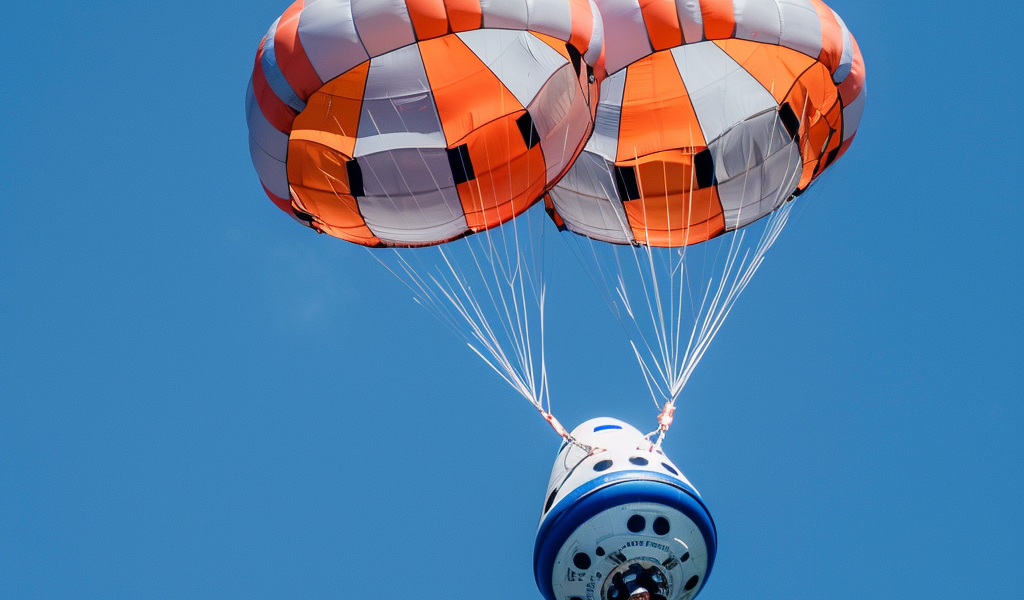Blue Origin’s recent New Shepard suborbital flight encountered a parachute issue when one of the three parachutes on the crew capsule failed to fully inflate during the NS-25 mission on May 19. The incident occurred due to a line controlling the parachute’s expansion not being cut as planned.
Despite this malfunction, the other two parachutes functioned correctly, allowing the capsule to land safely without any further complications. The NASA officials, during a briefing on May 31 regarding the upcoming Boeing CST-100 Starliner crewed test flight, mentioned being briefed by Blue Origin about the parachute problem. They noted that similar components are used in parachutes on other vehicles like the Starliner.
Steve Stich, the NASA commercial crew program manager, explained that the parachutes are designed to open in stages to reduce the loads on them. However, in this instance, one of the parachutes was stuck in the initial stage of the opening process due to a line at the throat of the parachute not being cut as intended. Although the parachutes on Starliner use a similar cutter, no issues were found during testing, allowing the Starliner launch to proceed.
Stich commended Blue Origin for their collaboration in sharing information about the parachute incident, emphasizing the importance of transparency and cooperation among the involved parties. Despite the ongoing investigation, Blue Origin has not disclosed much information to the public regarding the issue, omitting it from their mission release.
According to a company spokesperson, Blue Origin’s New Shepard system is designed to safely land with just one deployed parachute out of the three. Post-flight reviews are conducted after each flight to analyze the system thoroughly, with the analysis of the parachute incident still ongoing.





